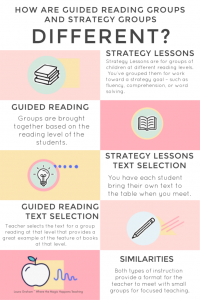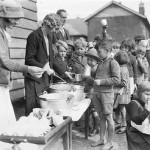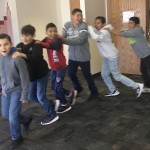
What are the key factors to creating an affective support class? My principal approached me with teaching an academic support class for ELA in December for students who were just shy of earning proficient in ELA. I agreed to take on the class because she stated, “You have the freedom to design however you see fit”. I immediately started with selecting the students I felt I could help the most and those that would be willing to have that extra support class. Then I started wondering how in the world was I going to get them to buy into taking a reading support class. Being a middle school teacher for over 23 years has it’s advantages and I thought about grouping them into one class of all boys and the other all girls. Then I thought boys and treats. They are always hungry and it was going to be 2nd period so why not have cookies as a treat for every time they completed a story or informational packet. Now the girls were going to be a different challenge because they are at the end of the day and food just isn’t an incentive for them, but playing games is. I would incorporate vocabulary games at the completion.
Fast forward to today, the boys have all shown dramatic improvement in reading and for most of them their ability to participate in my Social Studies class. The girls have shown improvement in reading but not the transfer into Social Studies. Some of my teachings practices have consisted of providing just the title of the story or the article for the students to explore what they think the topic may be or what the characters may have to face. Another, reviewing the vocabulary before giving them the story and using context clues to help figure out the words we were unable to identify. Next, we popcorn read with each student selecting which paragraph they want to read. This has gone well. For the boys they figuratively fight over being the next to volunteer to read. I have noticed I am assisting far less with the pronunciation of words and with the students helping one another or sounding out the word until they say it correctly. After reading each paragraph, we pause and the students will write a one-sentence summary of what they learned about the topic if it is an informational article or what they just learned in the plot of the story. Finally, we move onto the question portion. I read allowed the question with them reading to themselves the answers and which is the correct response.
They have now gained the value of marking their responses wrong or right to identify where their strengths and weaknesses may be. It is a healthy competition and positive encouragement when they come across a response that could have gone either way. The exciting part is when they realize why their response was incorrect. Overall, the boys seem to be more excited and involved in the overall process; whereas, the girls are simply going through the motions. They are showing improvement and I am proud of them, but they just don’t show the same enthusiasm as the boys.
This experience has geared me towards continuing this class into the next quarter. I think this type of excitement and dedication to their learning needs to continue. Let’s see if my principal will agree!








